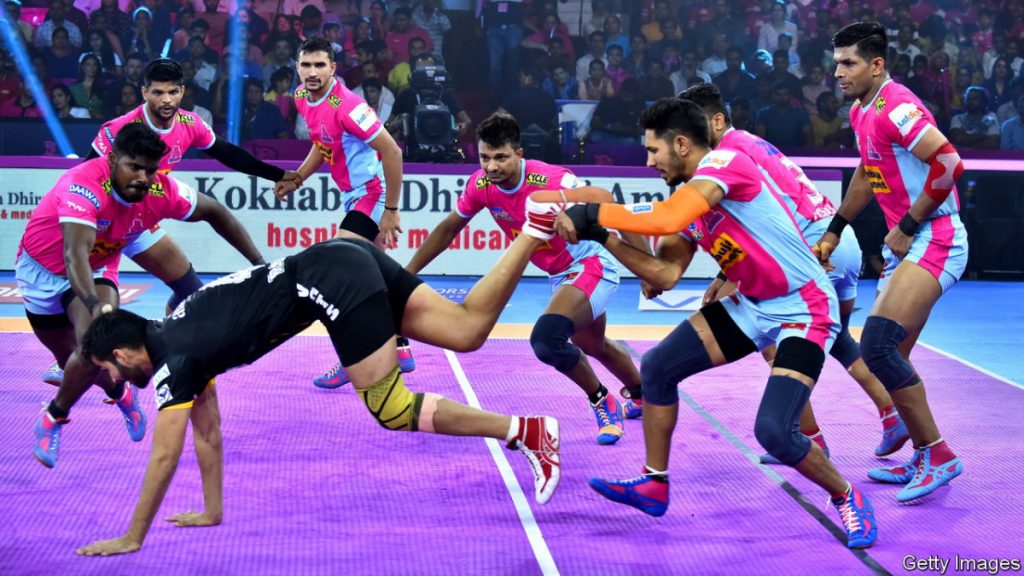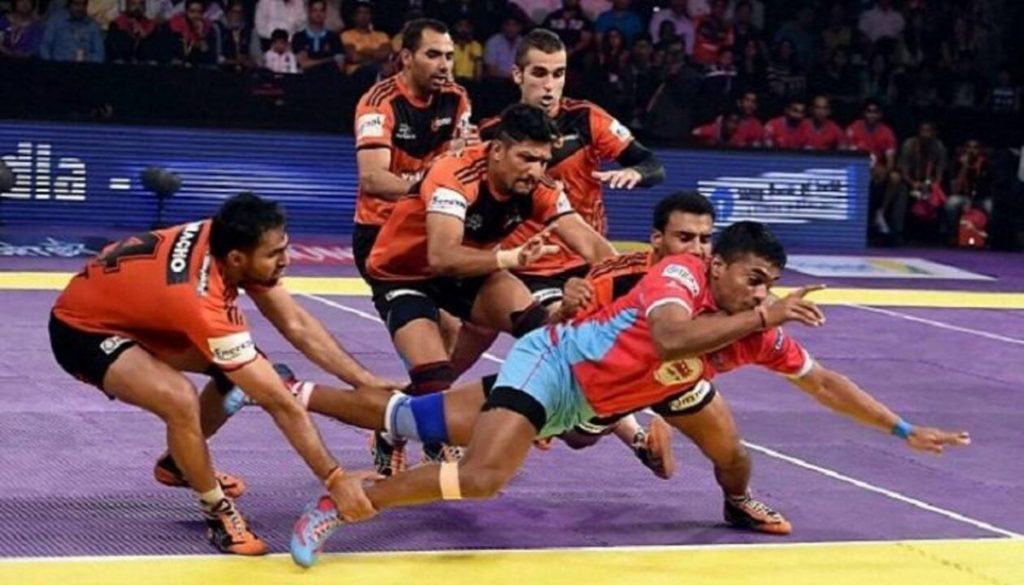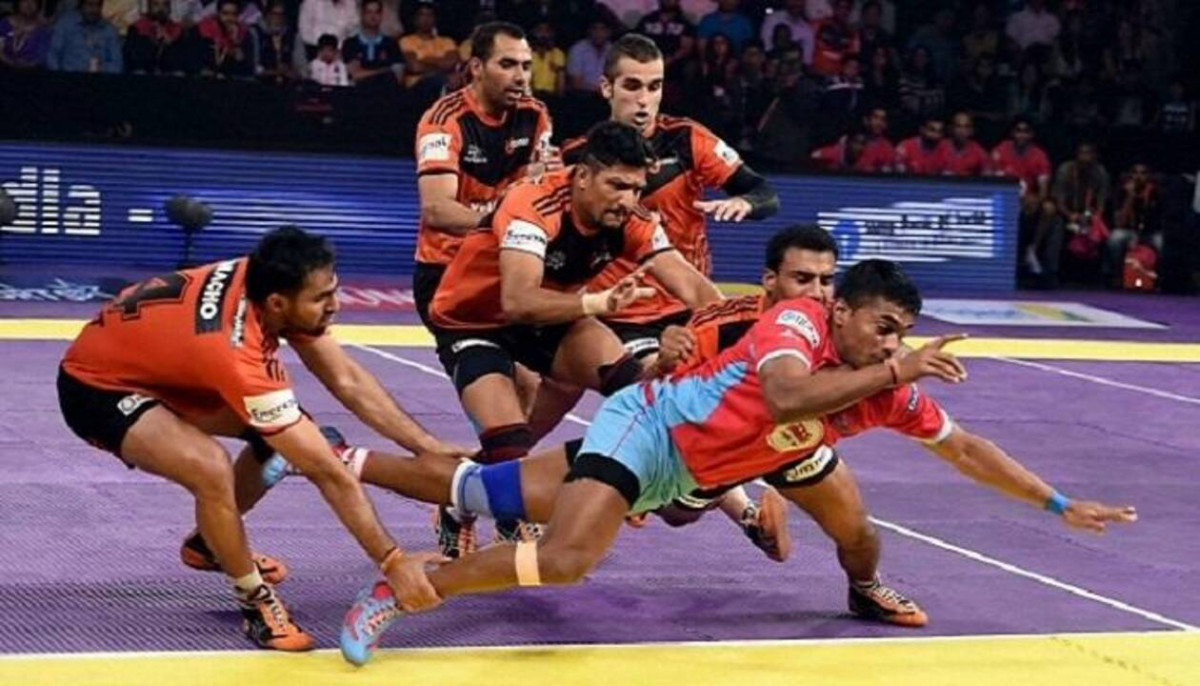Understanding the most commonly used terms and phrases in the Pro Kabaddi League
Kabaddi, a sport deeply rooted in Indian tradition, has seen a dramatic evolution with the advent of the Pro Kabaddi League (PKL). Blending age-old techniques with modern-day technology and entertainment, PKL has captivated millions, making it the second most-watched sports league in India, following the Indian Premier League (IPL).
For new fans and seasoned enthusiasts alike, grasping the sport’s terminology is crucial for a full appreciation of the game’s strategic depth and exhilarating pace.
Here, we look into some of the most frequently used terms and their meanings, providing an extensive glossary for understanding Kabaddi.

All-out
An all-out occurs when all seven players of a team are off the mat, either tagged by the raider or pinned down by defenders. This results in the opposing team earning two additional points and reviving all seven outed team players. This rule often shifts the momentum dramatically during a match.
Ankle Hold
Mastered typically by corner defenders, the ankle hold is a defensive manoeuvre where a defender grips a raider’s ankle, immobilizing them. This skill requires significant strength and precision, exemplified by players like Surender Nada and Fazel Atrachali.
Block
A block is a defensive move where the defender positions themselves directly in the raider’s path, preventing them from crossing the mid-line. Notable for their blocking prowess are players like Sandeep Narwal and Manjeet Chillar.
Back Hold
A back hold is an advanced defensive technique where a defender grabs the raider from behind and flips them to the ground. This move demands strength and agility, with Ran Singh being a prime exponent.

Baulk Line and Bonus Line
The baulk line, situated 3.75 meters from the mid-line, must be crossed by the raider for a legal raid. The bonus line, located one meter from the baulk line, offers an additional point if crossed by the raider with their other foot while ensuring their leading foot remains in the air.
Chant
Raiders must continuously chant “Kabaddi, Kabaddi” during their raid, maintaining the chant without interruption to validate their raid.
Corner and Cover Defenders
Corners at the extremities of the defense are crucial as raiders often target them first. Covers, located centrally, are integral in forming defensive chains and executing moves like dashes and thigh holds.
Dash
A dash involves a defender blindsiding a raider with a burst of speed, pushing them out of bounds. This move requires impeccable timing and coordination, demonstrated by experts like Jeeva Gopal.
Lobby
The stripes on either end of the court, known as the lobby, become active when a raider or defender makes contact. If entered without contact, the player is ruled out.
Running Hand-touch
This is a raider’s primary technique for scoring, involving a swift hand touch on a defender while running across the court. The agility and reach of players like Pardeep Narwal make this move particularly effective.
Thigh Hold
In this move, a defender grips the raider’s thighs, immobilizing them. This hold requires both strength and timing.
Toe Touch
The raider attempts to touch the defender’s toes with an outstretched leg, often catching the defender off guard. Anup Kumar is renowned for his mastery of this skill.
Back Kick and Mule Kick
A deceptive move where the raider kicks backwards to tag a defender, changing stance rapidly. This is also known as a mule kick, requiring agility and precision.
Chain Tackle
A defensive strategy involves two or more defenders holding hands to block the raider’s path. This requires excellent teamwork and synchronization.
Do-or-die Raid
After two empty raids, the third raid becomes a do-or-die raid, compelling the raider to score or be sent off. Players like Rishank Devadiga excel under this pressure.
Dubki
A challenging escape technique where the raider ducks under a chain tackle, springing towards the mid-line. Pardeep Narwal frequently employs this skill.
Empty Raid
A raid where the raider returns to the mid-line without scoring. This can be a strategic move to manage the game clock or force a do-or-die situation.
Frog Jump
A spectacular move where the raider leaps over defenders, using their back for elevation, much like a frog. Pawan Sehrawat’s jumps are a crowd favorite.
Golden Raid
In case of a tie after extra time, a golden raid decides the winner. The team winning the toss gets to raid first.
High 5
A defender achieves a high 5 by scoring five or more tackle points in a single match, showcasing exceptional defensive performance.
Lion Jump
Similar to the frog jump, but with more power derived from the calves, allowing the raider to propel high and evade defenders.
Pursuit
A defensive move where a defender chases a retreating raider back into their own half, often resulting in a quick point.
Revive Sequence
Eliminated players are revived in the order they were outed, ensuring a structured return to the game.
Side Kick and Scorpion Kick
The side kick involves a raider kicking sideways to tag a defender, maintaining balance and agility. The scorpion kick, popularized by Jang Kun Lee, involves a backward kick resembling a scorpion’s sting.
Super Tackle
Awarded when three or fewer defenders pin a raider, earning the defending team two points. This move requires skill and coordination.
Super Raid and Super 10
A super raid scores three or more points in a single attempt, while a super 10 is awarded to raiders scoring ten or more points in a match. Pardeep Narwal holds the record for the most super raids.
Understanding these terms enhances the viewing experience of Kabaddi, allowing fans to appreciate the skill and strategy involved.
As the Pro Kabaddi League continues to grow, mastering this glossary is essential for anyone looking to fully engage with the sport. Whether you’re watching from the stands or on television, these terms bring the vibrant and fast-paced world of Kabaddi to life.
Read More: 11 नवंबर से शुरू होगा Pro Kabaddi Season 11, क्या हो सकते है ये 3 बदलाव?

